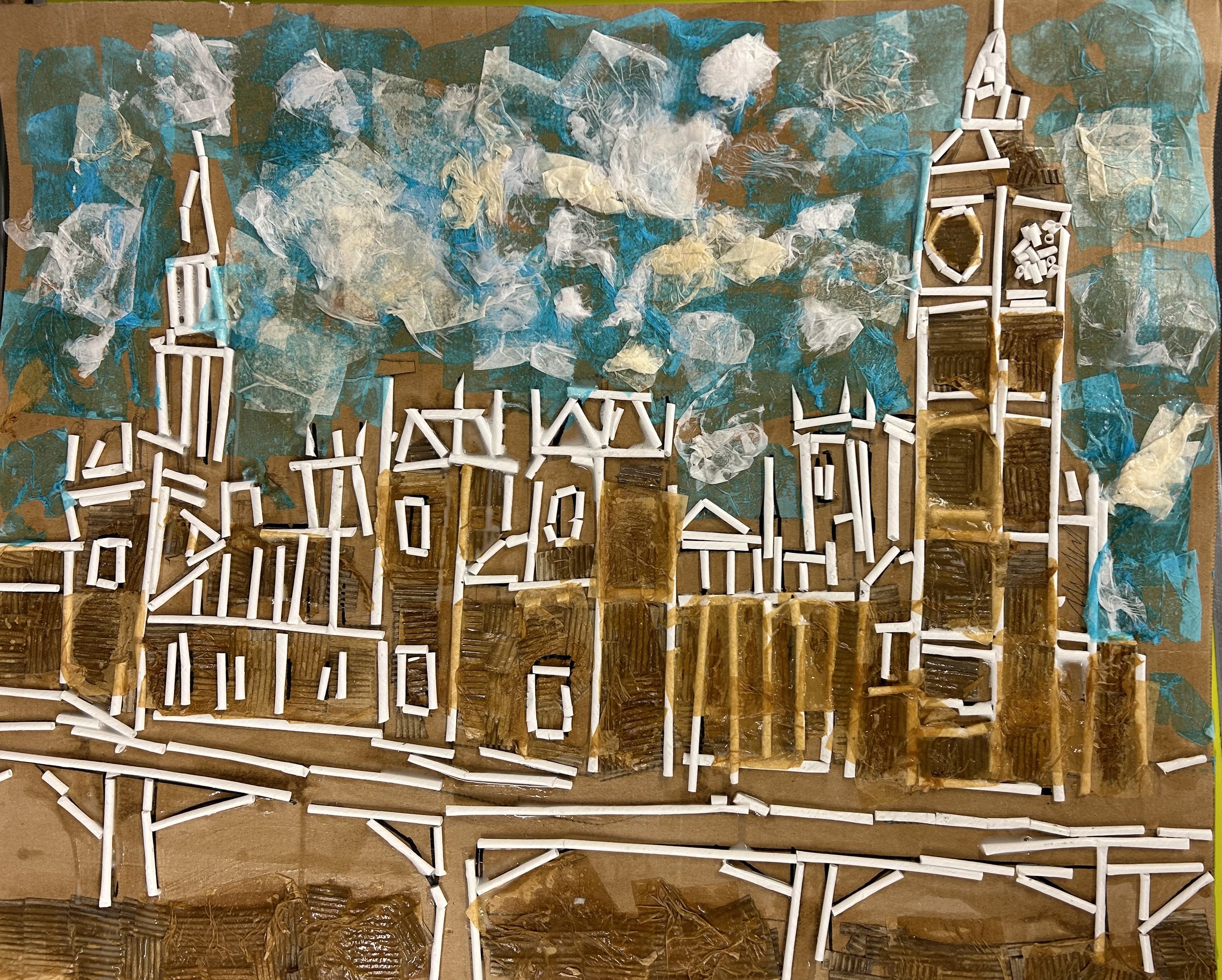London Landmarks
This was a project I created with the Year 1 and Year 2 pupils at Old Church Primary School in Darlaston in the West Midlands. When the school first asked me to create work on this theme with children so young my main concern was just how complex the buildings were and I thought long and hard about how to approach it so it wouldn’t be confusing or too complex for them. So, I decided to revisit the same images four times, once a day. On the first day we would concentrate on the basic shape and structures, on the second we would move onto windows etc. I wasn’t sure exactly how this would work but it was so successful that it’s definitely going to be a pattern that I repeat in future projects if I feel it will be beneficial.
One the first day I helped the children with the initial shapes by sketching just simple ‘boxes’ where the main parts of the building were and getting them to look closely at the photographs I’d brought as reference, so that they knew exactly which part of the building was which. They then cut up paper straws and glued them onto the outlines. While these were drying we chopped up some corrugated card and tried to glue this anywhere where we could see ‘brick-work’. Finally, they took some squares of blue tissue paper and pasted them onto the sky areas. This gave us a clear plan and helped the children to differentiate what was ‘building’ and what was ‘background’.
On the second day, these initial shapes had dried and so were all secure. We then looked back at the photographs again and discussed where we could see details, windows, doors, or other features that showed up clearly on the buildings. Using more straws the children began to add these to the images. If it was hard for them to locate the features I used a pencil to scribble roughly where they were. We also repeated the other two process from the day before, adding more corrugated card textures and also adding clouds to the sky by adding white tissue paper pieces.
I think it’s clear to see in these images how, even if the details, windows, towers etc aren’t completely straight, or don’t follow the perspective, it doesn’t really matter because our eyes correct this to a degree. So, as long as they weren’t sticking stuff on randomly I let the children play around, you can see how one of them has built a clock face as an oval and another different child has tried to ‘fill-in’ the clock face next to it with small pieces.
On the third day we revisited each picture again. This time we looked carefully for smaller details that we had missed and objects that were in the background, such as trees, lamp posts, or buildings in the distance. I gave the children more straws, but I also introduced matchsticks, which are obviously thinner. We didn’t ‘cut’ these . . . if they needed smaller pieces I showed them how to ‘snap’ them and then tidy up any frayed edges with their scissors. You can see in the above images how much detail they were able to add by returning to each picture on three different occasions and, because we used different materials and processes each time they didn’t see this as boring, in fact quite the opposite.
. . . and, while we had these materials on the table, and lots of small cut-up pieces, instead of throwing them away we made small vehicles to add to the roads in the foreground of a couple of the images. Again, I modelled this first but left them to use their imaginations, they made all sorts of trucks, vans, cars, and even coaches and buses.
The best way I’ve discovered to paint pieces like this with children is to give them palettes that are limited to the colours in the buildings, the sky, the background etc . . . and get them to look at these areas one at a time. They will still go a bit crazy occasionally, but mainly they will be inventive within these constraints. The straws and other outlines also help them to keep within the borders and provide a ‘physical’ outline, a barrier so that they are reminded of where the edges or details are, which would not happen if this was a 2D drawing.
It’s worth remembering just how young these children are, they all enjoyed this, it had lots of different processes, it didn’t rely on a massive amount of drawing ability. The cutting skills were very basic. Some of it was messy and exciting, some of it involved concentration and attention to detail. I was absolutely blown away by what they produced, but probably even more so by watching how hard they tried, how much they listened, both to me and each other, and also by the energy and joy they were able to instil into every single stage.














